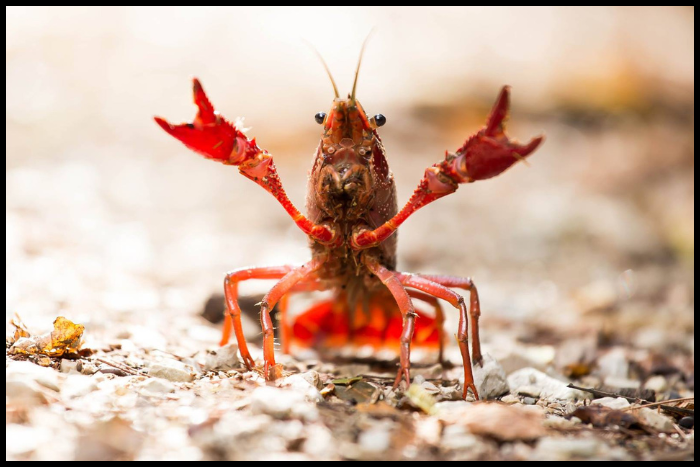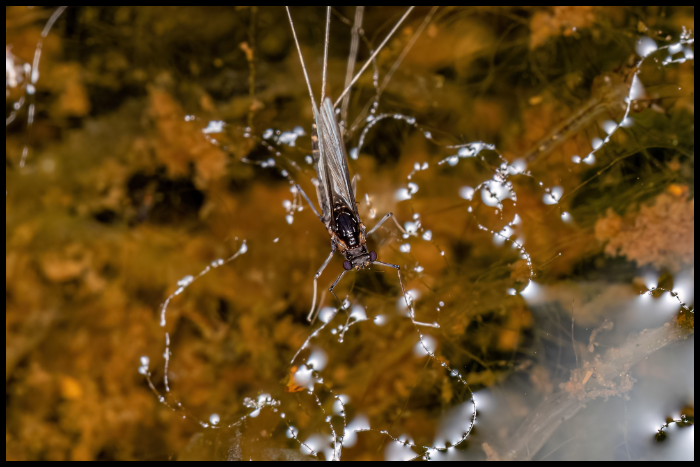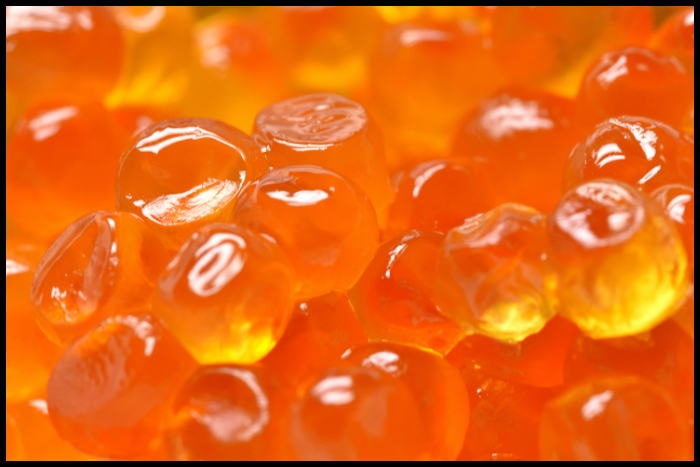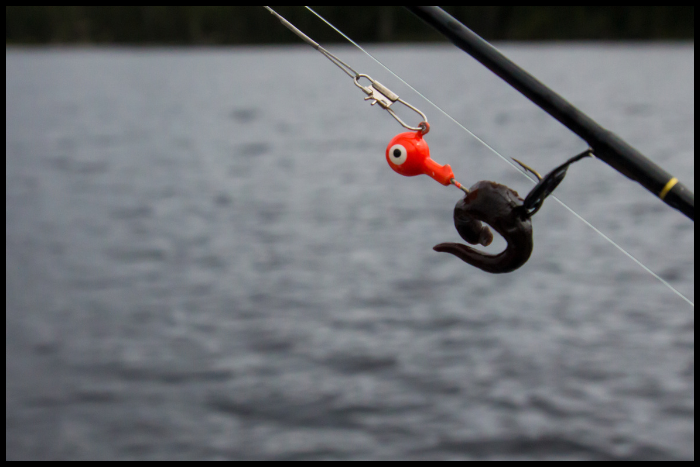Trout is one of the most popular fish in the world, existing everywhere except for Antarctica, and generally, their favorite foods share similar characteristics no matter where they are. But what exactly are some favorite trout foods?
As trout are opportunistic feeders, their favorite food is often what’s nearby. Depending on what is available, a trout’s favorite food will change with the seasons. High-protein organisms that are available in large quantities will be targeted by trout, and large meals will always be preferred.
Some of their favorite foods rely on what is locally available and will change depending on the season. Below are 10 of their favorite foods and what makes them preferred by trout.
What is a Trout’s Favorite Food?
Some common characteristics all trout share regarding their favorite food are readily available, protein-rich, colorful, and movement that triggers their predator drive.
The specific examples below will further detail what makes them appealing.
Also, apart from using their favorite foods, you can also significantly increase your trout catch rate by using some reliable options from my recommendations on the best trout fishing rods.
1. Crayfish Are A Trout Diet Staple
Crayfish is significant in a trout’s menu, often considered a diet staple. These aquatic crustaceans provide a rich source of protein, essential for trout growth and vitality.
The combination of meaty flesh and distinct movement makes crayfish irresistible to trout. As opportunistic predators, trout actively seek out crayfish in their underwater habitats.
The crunch of their exoskeletons, combined with the flavorful meat within, offers a diverse sensory experience for the fish.
The reddish or brownish hues of crayfish camouflage them well in the creek or riverbed, making them an easily accessible and rewarding target for hungry trout.
Crayfish consistently feature a favored and nutritious meal for a trout, whether in still waters or flowing streams.

2. Trout Prey On Other, Smaller Fish
Trout’s predatory nature extends to their appetite for smaller fish, making them skilled hunters in their aquatic ecosystems.
Their streamlined bodies and swift movements allow them to ambush unsuspecting prey precisely. Young trout, in particular, exhibit a penchant for devouring minnows, fry, and juvenile fish.
This piscivorous behavior gives them concentrated energy and protein, vital for their growth and survival.
Trout strategically position themselves near structures like submerged logs or rocky outcrops to capitalize on the movement of smaller fish.
This behavior reflects the trout’s role as a top predator and underscores their adaptability to different environments.
The pursuit and consumption of smaller fish demonstrate the trout’s prowess as an agile and effective aquatic predator.
3. Worms Are A Classic Trout Bait for a Reason
Worms have maintained their status as a classic and effective trout bait for generations of anglers.
Their wiggling, natural movement in the water mimics the behavior of live prey, immediately attracting the attention of hungry trout.
Earthworms, nightcrawlers, and aquatic worms present a familiar and enticing food source for trout. Their scent and texture trigger the trout’s predatory instincts, often leading to successful strikes.
Whether cast into a gentle pool or drifted along a swift current, worms offer a versatile option for anglers aiming to tempt trout.
This timeless bait choice bridges the gap between natural and artificial offerings, capitalizing on the trout’s innate attraction to live, wriggling prey.
The enduring appeal of worms underscores their position as a classic go-to option for those seeking to reel in these elusive and alluring fish.
4. Trout Eat Many Aquatic Invertebrates
Trout exhibit a diverse palate regarding their preferred diet, frequently indulging in various aquatic invertebrates.
Mayflies, caddisflies, stoneflies, and midges are among the numerous invertebrates that contribute to their sustenance.
These creatures inhabit the underwater world, from the streambed to the water column, providing a consistent and energy-rich food source.
The adaptability of trout to forage on such a range of invertebrates underlines their ability to thrive in differing aquatic habitats.
Their propensity to feed on aquatic invertebrates underscores the delicate balance of ecosystems, where trout play a vital role as both predator and indicator species.

5. Other Insects Are A Part of Trout’s Favorite Foods
Trout’s culinary preferences extend beyond aquatic invertebrates, encompassing a broader spectrum of insects that inhabit their surroundings.
Emerging aquatic insects, such as damselflies and dragonflies, attract their attention as they transition to adulthood.
With intriguing emergence patterns, these insects provoke frenzied feeding behaviors in trout. Additionally, trout indulge in water beetles, which inhabit the surface and offer a substantial meal.
This inclination towards various insects highlights the trout’s adaptability and keen ability to capitalize on the seasonal availability of different food sources in their environment.
6. Trout Love Terrestrial Insects That Fall in the Water
Trout’s enthusiasm for food isn’t confined to the aquatic realm; they eagerly capitalize on the bounty of terrestrial insects that inadvertently find their way into the water.
Grasshoppers, ants, beetles, and crickets are among the terrestrial insects that trout relish. When these insects fall from overhanging vegetation onto the water’s surface, trout react with gusto.
The spectacle of trout leaping out of the water to intercept these morsels showcases their agile and acrobatic feeding behavior.
This interaction with terrestrial insects satisfies their appetite and underscores the interconnectedness of the aquatic and terrestrial ecosystems, where trout are vital links in the food chain.
7. Salmon Eggs Are A Trout’s Favorite Food
Salmon eggs hold a special allure for trout, representing a delectable and nutrient-rich feast. During the salmon spawning season, eggs are released into the water, and trout eagerly seize this seasonal bounty.
The high protein content and energy-rich yolk of these eggs provide a concentrated source of sustenance, especially vital as trout prepare for winter months.
The vibrant colors of the eggs further attract the attention of these keen-sighted predators.
This phenomenon underscores the interconnectedness of aquatic ecosystems and reveals the intricate ways trout capitalize on available resources.

8. Emerging Aquatic Insects Are a Seasonal Delicacy
Trout relish the emergence of aquatic insects as a seasonal culinary delight. As insects transition from their nymph stage to adulthood, they ascend to the water’s surface, vulnerable and irresistible to trout.
The anticipation of this emergence triggers feeding frenzies, as trout actively intercept insects like mayflies, caddisflies, and stoneflies.
This behavior amplifies the trout’s foraging skills and strategic feeding habits, highlighting their adaptability to the ever-changing rhythms of their environment.
9. Small Mammals Are Food For Opportunistic Trout
In larger bodies of water, some trout species showcase their opportunistic side by preying on small mammals that accidentally find themselves in the water.
Mice, shrews, and other terrestrial creatures that fall in become targets for larger, predatory trout.
This behavior emphasizes the diverse diet of these versatile predators and showcases their willingness to explore unconventional food sources when presented with the opportunity.
10. Leeches Are A Protein Rich Trout Food They Love
Leeches uniquely appeal to trout due to their high protein content and wiggling movements. These worm-like creatures inhabit various aquatic environments and serve as a substantial protein source for trout.
In still waters or fast-moving currents, leeches attract trout with their alluring texture and energy-packed nutrition.
The trout’s affinity for leeches underscores their adaptability to varying habitats and their role as top-tier predators in aquatic ecosystems.

Trout aren’t All About Taste
Trout have many favorite foods, and while some come and go with the seasons, trout are always quick to gobble them up when available.
You can use this list to plan to use live or imitation baits to match the hatch based on their feeding habits.
Also, unlike people, trout like their food based on high protein content and what drives their prey drive rather than taste alone.
However, when trout are desperate, they might rely on plants, dead insects, fish, or anything else to survive. Hungry trout will always jump at the chance of live bait, so use this to your advantage!
